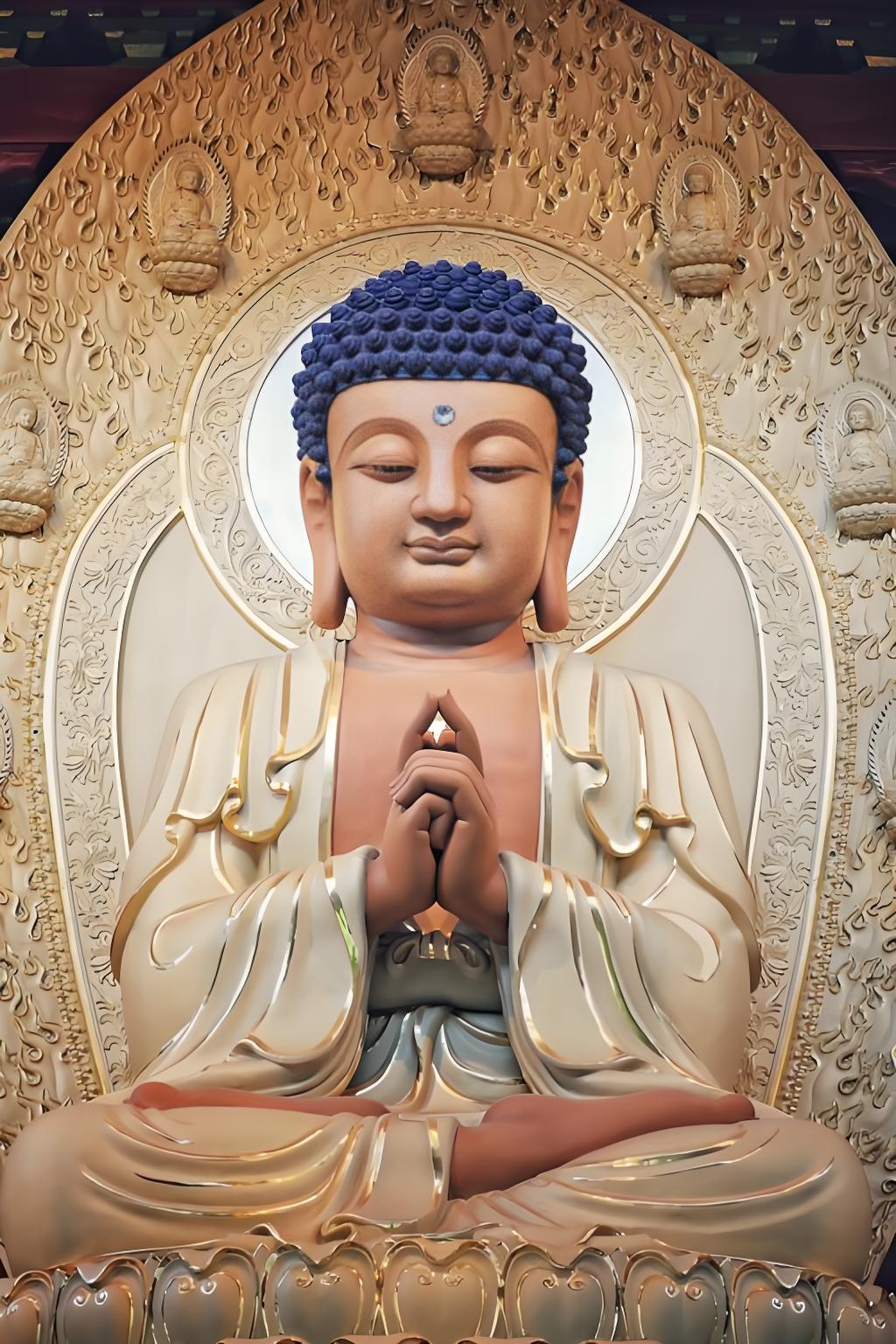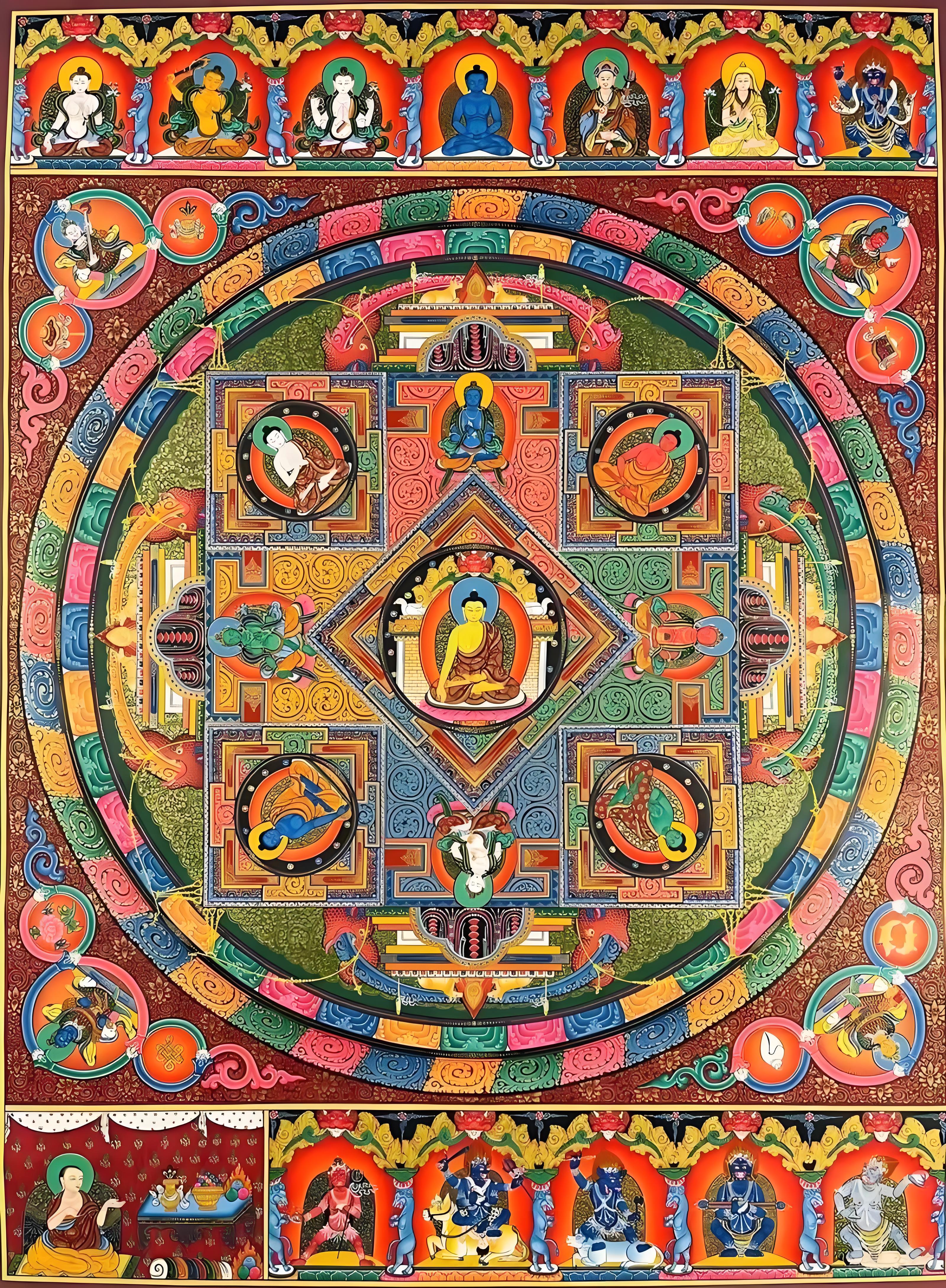Introduction
In the vast tapestry of Buddhist cosmology, numerous figures embody enlightenment and wisdom. Among these, Vairochana stands out as a particularly significant and profound figure. Often referred to as the “Cosmic Buddha” or the “Great Sun Buddha,” Vairochana represents the dharmakaya, the ultimate reality or the body of truth in Mahayana and Vajrayana Buddhism. This article will delve deep into the meaning, symbolism, and significance of Vairochana, exploring his role in Buddhist teachings and practices. His luminous presence transcends time and space, inviting us to explore the boundless potential within our own minds.
Who is Vairochana? Understanding the Cosmic Buddha
Vairochana, derived from the Sanskrit word meaning “shining” or “illuminating,” is not just another Buddha. Indeed, Vairochana is often considered the embodiment of the Dharmakaya, the formless, ultimate reality that underlies all of existence. Therefore, he is not merely a historical figure, but rather the very essence of enlightenment itself. Furthermore, in Mahayana and Vajrayana traditions, Vairochana is revered as the source from which all other Buddhas emanate. He is the embodiment of wisdom and purity, the cosmic light that illuminates the path to liberation. Moreover, the name itself, “Great Sun Buddha,” suggests his role as a source of enlightenment, similar to the way the sun illuminates the world.
Vairochana’s Place in Buddhist Cosmology
In many Buddhist traditions, Vairochana holds a central position within the mandala, a symbolic representation of the universe. Indeed, he is frequently depicted at the heart of the five Dhyani Buddhas (or the five Wisdom Buddhas), who are considered emanations of Vairochana, each representing a different aspect of enlightenment. Furthermore, these five Buddhas, including Vairochana, are associated with different directions, colors, and wisdoms. Moreover, Vairochana, at the center, represents the totality of these wisdoms, the source of all Buddhas, and also the ultimate reality itself. Additionally, this central role symbolizes his all-encompassing nature and his connection to the entire cosmos.
The Symbolism of Vairochana: A Deep Dive
Vairochana’s symbolism is both rich and multi-layered. For example, his association with the sun signifies his role as a source of light, both literally and metaphorically. Additionally, this light symbolizes the wisdom that dispels the darkness of ignorance. Also, Vairochana is often depicted with a white color, representing purity and the unblemished nature of enlightenment. His hands are frequently shown in the Dharmachakra mudra, also called the “teaching gesture” which represents the turning of the wheel of Dharma. Additionally, Vairochana is sometimes depicted with the “six elements” mudra which represents the union of the five material elements with consciousness. Thus, each of these symbols provides a deeper understanding of Vairochana’s role as the source of wisdom and enlightenment.
Vairochana in Different Buddhist Traditions
Vairochana is revered across many Buddhist traditions, although his interpretation and significance can vary.
- Mahayana Buddhism: In Mahayana Buddhism, Vairochana is often seen as the Dharmakaya of the historical Buddha, Siddhartha Gautama. Moreover, he is considered the cosmic aspect of the Buddha, the source of all Buddhas and Bodhisattvas. Additionally, the Avatamsaka Sutra prominently features Vairochana, describing him as the foundation of all phenomena.
- Vajrayana Buddhism: In Vajrayana Buddhism, also known as Tantric Buddhism, Vairochana is a central figure in tantric practices and visualizations. He is often depicted in mandalas and is considered one of the five cosmic Buddhas. His role extends to tantric teachings, specifically the Mahavairocana Tantra, which describes the practices for realizing enlightenment.
- East Asian Buddhism: In East Asian traditions, particularly in China, Japan, and Korea, Vairochana is also known as Dainichi Nyorai (Japan) or Piluzhena (China). He is revered as the Great Sun Buddha and the source of the entire universe, especially within the Shingon school of Japanese Buddhism. His worship focuses on achieving enlightenment through his teachings and practices.
The Teachings and Philosophy of Vairochana: Illuminating the Path
Vairochana’s teachings delve into the nature of reality, enlightenment, and the path to liberation. They emphasize the concept of sunyata or emptiness, which is the understanding that all phenomena are devoid of inherent existence. This teaching is about recognizing the interconnectedness of everything, moving beyond the illusion of separation. Moreover, his teachings include the concept of Buddha-nature, which states that all beings have the potential to achieve enlightenment. Additionally, Vairochana’s teachings are a reminder that enlightenment is not an external achievement, but a realization of our own innate potential.
The Significance of Vairochana in Buddhist Practice
Vairochana’s importance extends beyond just philosophical understanding. His presence in Buddhist practice is substantial. Furthermore, Vairochana’s mantras and dharanis are used in rituals, meditations, and visualizations to invoke his wisdom and transformative power. Additionally, meditating on Vairochana and his symbolism can facilitate a deep understanding of the teachings and enhance the practice, guiding practitioners towards enlightenment. Also, statues and artwork depicting Vairochana act as focal points for meditation, reminding practitioners of their ultimate potential.
A Symbol of Universal Enlightenment
Vairochana is not just a figure from Buddhist history; he’s a timeless symbol of the potential for universal enlightenment. His depiction as the “Great Sun Buddha” is a powerful reminder that wisdom and compassion are accessible to all. By understanding and contemplating Vairochana, individuals can embark on a journey towards self-discovery and spiritual awakening, uncovering the inherent wisdom that exists within themselves. Moreover, his teachings inspire individuals to seek enlightenment, not just for themselves, but for the benefit of all beings.
The Enduring Legacy of Vairochana
The legacy of Vairochana transcends centuries and cultures. His profound influence is felt in the countless works of art, literature, and philosophical discourse that have emerged from Buddhist traditions. Moreover, the grand statues of Vairochana, found throughout Asia, stand as a testament to his significance. For example, the Spring Temple Buddha in China, one of the tallest statues in the world, is a testament to his influence. Furthermore, the teachings and symbolism of Vairochana continue to inspire people around the world, encouraging seekers to embark on their own path to enlightenment. Thus, Vairochana’s impact on Buddhism is immeasurable, a beacon of light and wisdom for all who seek it.
Now that you’ve journeyed into the depths of Vairochana’s cosmic wisdom, what resonates most with you? Share your thoughts in the comments below. If you found this exploration enlightening, please share it with others and continue your journey of discovery with our other insightful articles.



